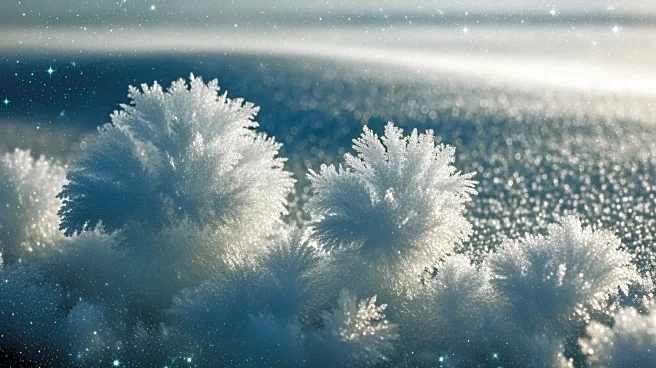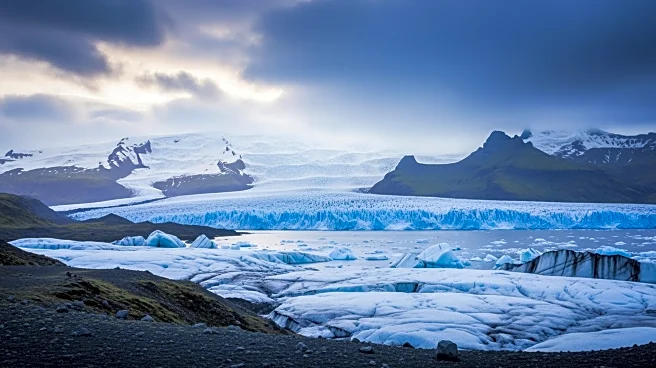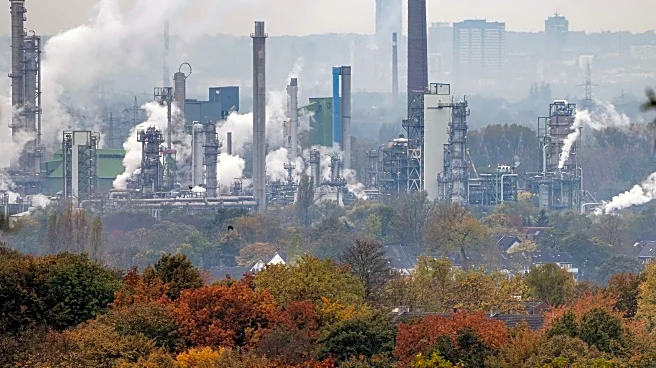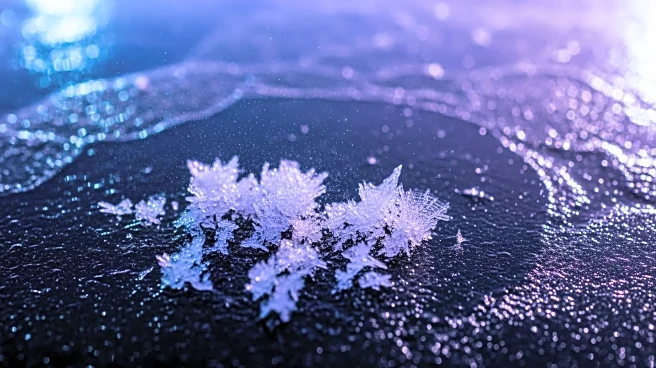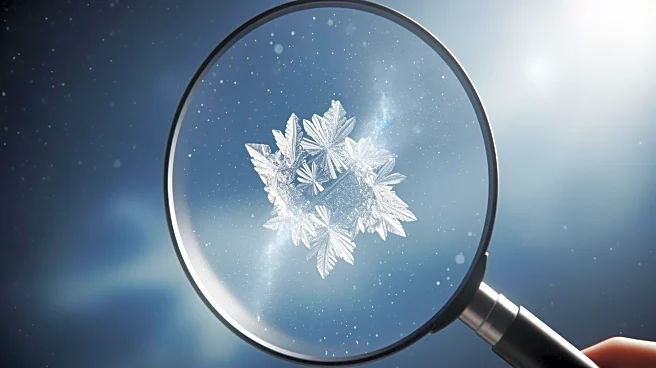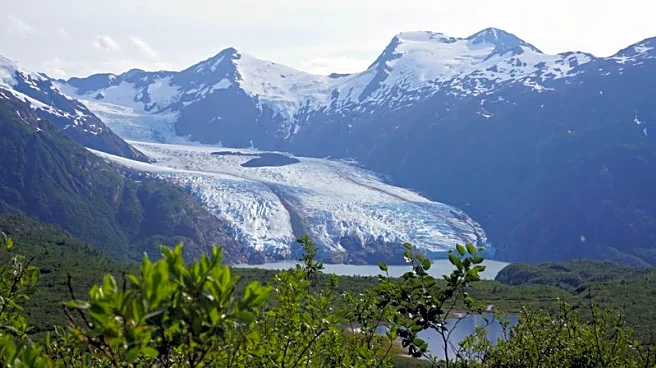What's Happening?
A study published in Science reveals that cosmic dust accumulation in ocean sediments offers insights into the historical changes in Arctic sea ice coverage. Researchers found that Arctic sea ice has shrunk
by more than 42% since 1979, with projections suggesting ice-free summers within the next few decades. The study used cosmic dust, which carries a rare version of helium, to track changes in sea ice over the past 30,000 years. The findings indicate that periods of persistent ice cover corresponded with low levels of cosmic dust in sediments.
Why It's Important?
The rapid decline in Arctic sea ice has significant implications for global climate patterns, ecosystems, and human societies. As ice retreats, more open ocean absorbs sunlight, accelerating warming and contributing to further ice loss. Understanding the historical patterns of ice coverage can help predict future changes and inform strategies to mitigate the impacts on food webs, fishing, and geopolitical dynamics. The study highlights the importance of monitoring and addressing the effects of climate change in the Arctic region.
What's Next?
Researchers aim to further explore the relationship between ice cover and nutrient cycling in the Arctic. The study suggests that decreased ice levels may lead to increased nutrient consumption by phytoplankton, affecting the food web. Continued research will focus on understanding the drivers of nutrient shifts and their implications for marine productivity.
Beyond the Headlines
The study emphasizes the interconnectedness of climate systems and the importance of interdisciplinary research in understanding and addressing climate change. It highlights the need for comprehensive strategies to protect Arctic ecosystems and manage the impacts of ice loss on global climate patterns.
